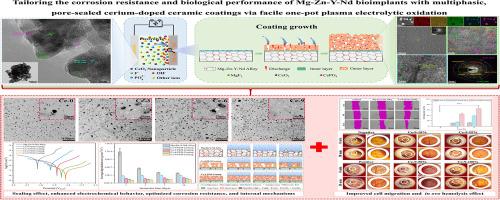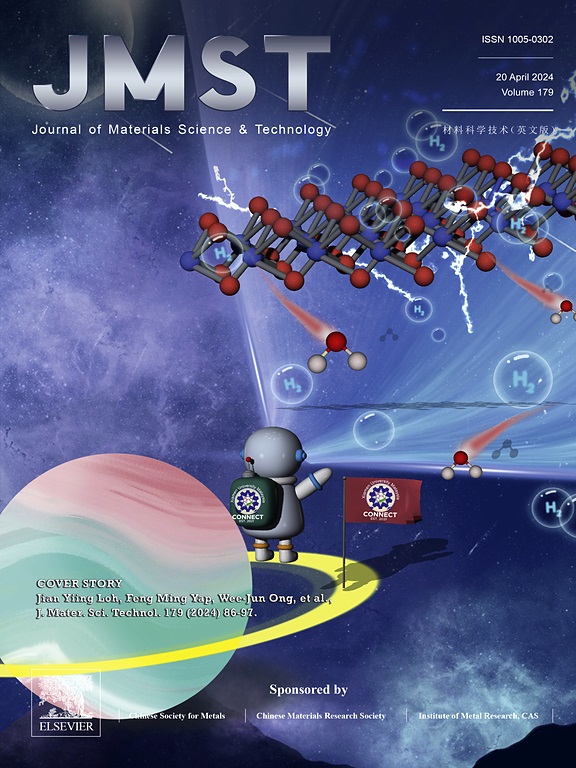Tailoring the corrosion resistance and biological performance of Mg-Zn-Y-Nd bioimplants with multiphasic, pore-sealed cerium-doped ceramic coatings via facile one-pot plasma electrolytic oxidation
IF 11.2
1区 材料科学
Q1 MATERIALS SCIENCE, MULTIDISCIPLINARY
引用次数: 0
Abstract
Magnesium alloys have illustrated great promise for building biodegradable implantable devices due to their unique combination of biocompatibility, mechanical properties, and degradable absorption characteristics. However, the uncontrollably fast degradation in physiological environments remains a humongous challenge restraining their clinical application, requiring engineering strategies such as surface modification for biocorrosion and biofunctionality optimization. Herein, CeO2 nanoparticle-doped plasma electrolytic oxidation (PEO) coatings were applied to surface modify a novel Mg-Zn-Y-Nd alloy. During the PEO process, nanocrystal CeO2 nanoparticles, alongside the newly formed secondary corrosion-resistant (CePO4) phase, sealed the micropores of the PEO coatings under discharge, affording enhanced barrier effects against biocorrosion. Electrochemical tests in Hank's solution showed a remarkable increase in corrosion potential and charge transfer resistance and a decrease in corrosion current density. Further characterization showed that a dense anti-corrosion coating of Mg(OH)2/CeO2/Ce(OH)3 was formed, effectively limiting the attacks of corrosive mediums and ensuring controlled degradation. The coating-functionalized implants, as reveled in vitro and in ovo, were compatible with NIH3T3 fibroblasts, HUVECs, red blood cells, and chick chorioallantoic membranes, with even enhanced pro-healing effects in scratch-based wound models. Overall, this work highlights the potential of CeO2-doped PEO coatings to fine-tune the corrosion resistance and biocompatibility of Mg-Zn-Y-Nd alloys for biomaterial implants.

求助全文
约1分钟内获得全文
求助全文
来源期刊

Journal of Materials Science & Technology
工程技术-材料科学:综合
CiteScore
20.00
自引率
11.00%
发文量
995
审稿时长
13 days
期刊介绍:
Journal of Materials Science & Technology strives to promote global collaboration in the field of materials science and technology. It primarily publishes original research papers, invited review articles, letters, research notes, and summaries of scientific achievements. The journal covers a wide range of materials science and technology topics, including metallic materials, inorganic nonmetallic materials, and composite materials.
 求助内容:
求助内容: 应助结果提醒方式:
应助结果提醒方式:


